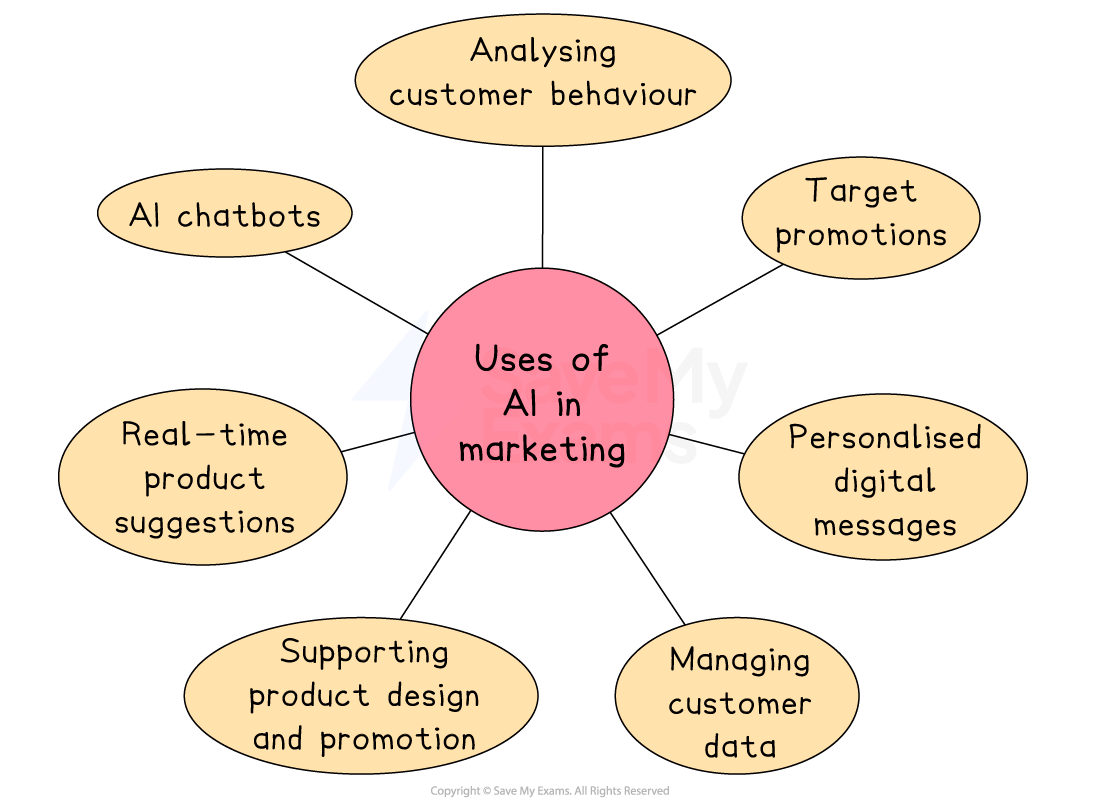Approaches to Marketing Strategy (Cambridge (CIE) A Level Business): Revision Note
Exam code: 9609
Consistency of the marketing strategy
Marketing strategies need to be consistent and coordinated carefully to ensure that they are fully focused on achieving marketing objectives
Features of an effective marketing strategy
Consistent | Coordinated | Focused |
|---|---|---|
|
|
|
The importance of consistency
Consistency in marketing means that all parts of a business’s marketing plan and activities work together in a unified and coordinated way
Messages, branding, pricing, and customer experience feel the same across all platforms and over time
This builds trust, strengthens the brand, and avoids confusion
How do businesses achieve consistency?
Method | Explanation |
|---|---|
Clear marketing objectives |
|
Strong brand identity |
|
Integrated marketing mix |
|
Communication |
|
Case Study
Apple's consistent marketing strategy
Apple has built a strong brand based on design, innovation, and simplicity
These ideas influence how the company creates its products, advertises them, and treats its customers
Branding
Whether a customer is looking at a product, a store, or a website, the clean and modern Apple style is always the same
Product design
Apple focuses on high-quality, simple design across its whole range, from iPhones to MacBooks
Promotion
Apple uses minimalistic advertising with strong emotional appeal
The same tone and style are used globally
Customer experience
In Apple Stores around the world, the layout, service and atmosphere are consistent
Because of this consistency, customers trust Apple and feel confident in their products
This helps maintain customer loyalty and enables premium pricing
Coordinated marketing strategy
A coordinated marketing strategy means all parts of the marketing plan work together smoothly
This involves making sure that every department involved, such as sales, product design, advertising, and customer service, is aligned with the overall marketing goals
Good coordination avoids mixed messages and improves efficiency
How do businesses achieve coordination?
Method | Explanation |
|---|---|
Shared objectives |
|
Cross-department teamwork |
|
Planning meetings |
|
Consistent marketing mix |
|
Case Study
Well-coordinated marketing strategy at Coca-Cola
Coca-Cola shows excellent coordination across its global marketing activity
This coordination helps Coca-Cola stay as one of the world’s most recognisable and successful brands.

Product
Taste, packaging, and quality are consistent worldwide
Promotion
Advertising campaigns, such as "Share a Coke", are used across many countries with local adaptations
Sales and distribution
Coca-Cola works closely with retailers, restaurants, and vending machine suppliers to ensure availability
Customer service
Support teams know the marketing campaigns and brand message to create a consistent customer experience
Marketing strategy and its focus on objectives
A marketing strategy focused on objectives ensures that every marketing decision is aimed at achieving clear, specific goals
These objectives may include increasing sales, building brand awareness or entering a new market
When marketing activities are aligned with these goals, the business is more likely to succeed
How businesses ensure focus on objectives
Method | Explanation |
|---|---|
Setting SMART objectives |
|
Performance tracking |
|
Strategic planning |
|
Regular reviews |
|
Case Study
Nike's focused marketing strategy
Nike is a good example of a company that keeps its marketing focused on clear objectives
With this clear focus, Nike remains competitive and keeps growing its customer base worldwide
Objective
Strengthen customer loyalty and grow global market share among young, active consumers
Strategies
Use high-profile athletes and inspirational advertising to build emotional connections
Launch targeted campaigns like “Just Do It” that support its brand message and appeal to its audience
Track performance through sales figures, social media engagement, and customer surveys
Information technology in marketing
Information technology (IT) tools and applications are extensively used in marketing for a variety of purposes
Where are IT tools and applications used in marketing?
Social media
Businesses use platforms like Instagram, TikTok and YouTube to build and maintain a presence
Regular posts link products to trends, creating modern word-of-mouth promotion
Social media enables fast, interactive communication using video and sound
Customer comments and reviews can support market research
E.g. Forever 21 uses Instagram to share images and short videos promoting new products and events
Websites
Most firms use a website, sales platform, or both
These allow online selling and quick sharing of company info like press releases
Blogs and vlogs help drive traffic to sales platforms.
Zalando, based in Germany, is an online mall for top European fashion brands and own labels like Kickz
Businesses create databases of customers who opt in to email updates
These emails share news of new products, offers and events quickly and cheaply
Mobile
Many businesses use mobile apps for browsing and purchases
Text messages can promote offers, share links and gather feedback
In-store
Technology in stores attracts and engages customers
Digital signage promotes offers and ranges while enhancing store ambience
Custom systems give live updates on stock to staff and shoppers
Artificial intelligence in marketing
It is argued that marketing is the business function where artificial intelligence (AI) has significant potential to make a positive impact
Current uses of AI in marketing

Analysing customer behaviour
AI can study huge amounts of data from sources like social media, smart speakers, online shopping and product reviews
This helps businesses understand what customers like, how they shop and what influences their decisions
Targeted promotions
Using real-time data, AI can quickly send the right adverts or offers to the right customers
This makes marketing more effective and personalised
Personalised digital messages
AI can create and send custom messages to individuals based on their interests, shopping history and past interactions with the business
Managing customer data
AI helps organise and analyse customer profiles by combining information from various devices and apps
This gives businesses a clearer picture of their audience
Supporting product design and promotion
AI gives product designers and marketers detailed insights into what customers want
This helps them create and promote products that are more likely to succeed
Real-time product suggestions
While a customer is shopping online, AI can recommend products based on their past or current activity
This can influence what the customer chooses to buy
AI chatbots
Many businesses use AI-powered chatbots to answer customer questions automatically
These bots are available 24/7 and help improve customer service without needing human staff at all times
AI in marketing: key concerns
Consumer resistance | Capital investment requirements | Careful human supervision is required |
|---|---|---|
|
|
|

Unlock more, it's free!
Did this page help you?